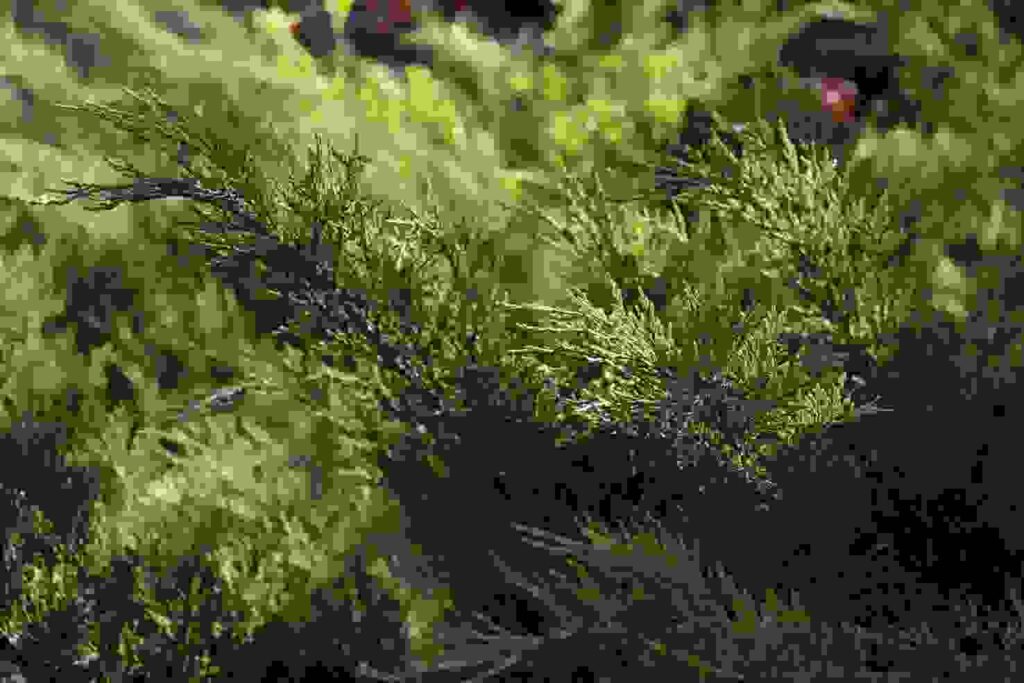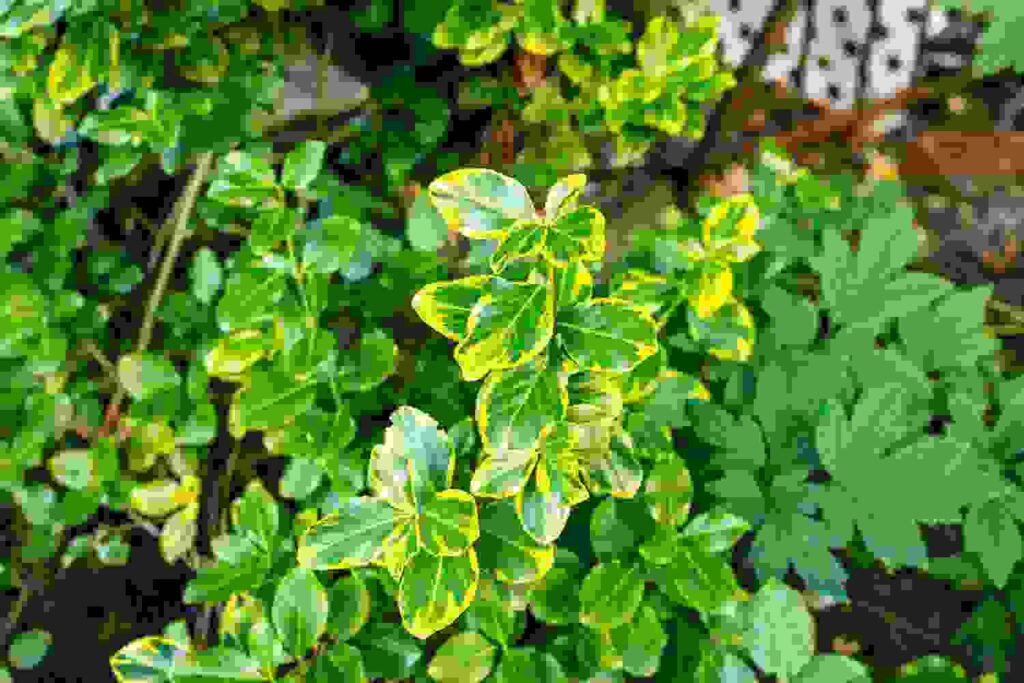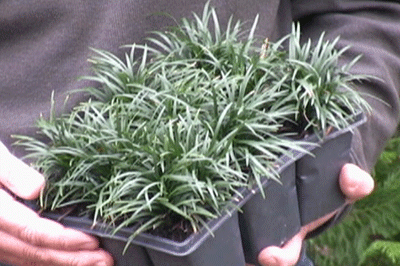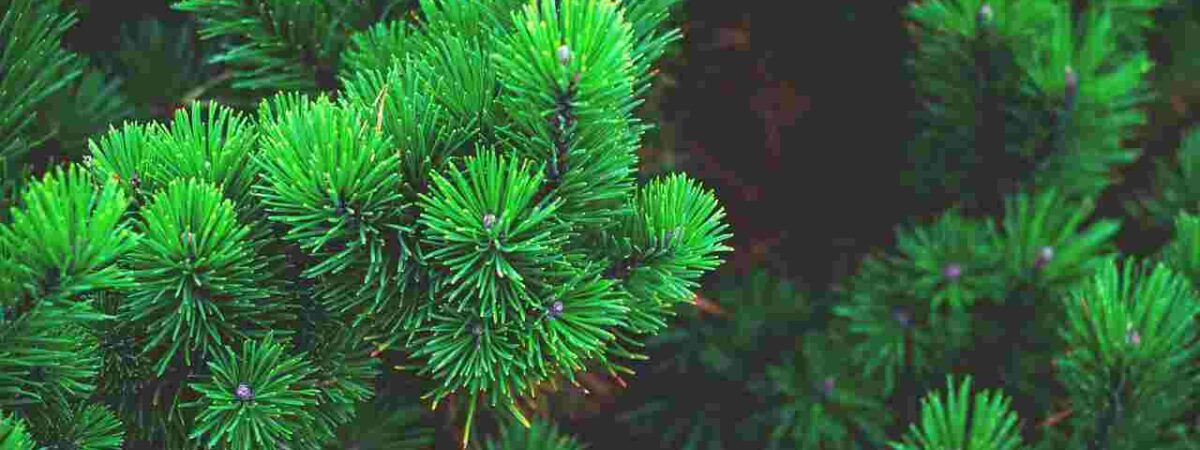Are you tired of constantly replanting your garden every season? Do you want a low-maintenance solution for your landscape?
Look no further than groundcover evergreen plants!
These versatile plants offer year-round coverage and require minimal maintenance.
In this post, we’ll be exploring the top 7 groundcover evergreen plants that will transform your garden into a stunning, low-maintenance oasis. From the lush Japanese Pachysandra to the delicate Dwarf Mondo Grass, we’ve got you covered.
So, let’s dive into the world of evergreen groundcovers and discover the perfect solution for your landscaping needs!
What is groundcover evergreen plants?
Groundcover evergreen plants are low-growing plants that spread horizontally, providing year-round coverage to the soil. They are called “evergreen” because they retain their leaves throughout the year, unlike deciduous plants that shed their leaves during winter. Evergreen groundcovers come in various shapes and sizes, from tiny creeping plants to larger shrubs.
They are an excellent solution for landscaping areas that require low maintenance and can be used for various purposes, such as erosion control, weed suppression, and as a decorative element in your garden. They offer several benefits, including providing a lush, green carpet-like covering to the soil, and reducing soil erosion, preventing the growth of weeds, and requiring minimal upkeep. Evergreen groundcovers are also ideal for creating a uniform look in your garden while keeping the maintenance to a minimum.
Benefits of groundcover evergreen plants
There are several benefits of using groundcover evergreen plants in your garden or landscape. Here are some of the key benefits:
Year-round coverage
Evergreen groundcovers provide a green covering to the soil all year round, which means they keep your landscape looking vibrant and lush throughout the seasons.
Erosion control
These plants spread horizontally and form a dense mat over the soil, which helps to prevent soil erosion, especially on sloped or hilly areas.
Weed suppression
Evergreen groundcovers are an excellent way to reduce weed growth and minimize the need for herbicides. By creating a thick layer over the soil, they prevent sunlight from reaching weed seeds, preventing them from germinating.
Low maintenance
These plants require minimal upkeep, making them an ideal choice for those who want to maintain a beautiful garden without spending a lot of time on maintenance.
Water conservation
Evergreen groundcovers help to retain moisture in the soil, reducing the need for frequent watering.
Aesthetic appeal
These plants offer a variety of textures, colors, and shapes, making them an excellent choice for adding visual interest to your landscape.
Environmental benefits
Evergreen groundcovers help to reduce carbon emissions by sequestering carbon dioxide from the atmosphere. They also provide habitat and food for wildlife, including birds, insects, and small mammals.
Best groundcover evergreen plants
Japanese Pachysandra

Description and characteristics
Japanese Pachysandra is a popular evergreen groundcover that grows up to 8 inches in height and spreads up to 18 inches. It has glossy, dark green leaves that form a dense mat and produce small white flowers in spring. It grows well in partial shade and prefers moist, well-drained soil. It is deer resistant and low maintenance.
Growing requirements
Japanese Pachysandra (Pachysandra terminalis) requires well-drained soil that is kept consistently moist. It grows best in partial to full shade and is hardy in USDA hardiness zones 4 to 8. It benefits from occasional fertilization and should be pruned in early spring to maintain its shape. Japanese Pachysandra is also drought-tolerant once established.
Benefits as groundcover
Japanese Pachysandra is a versatile and low-maintenance groundcover that can thrive in shade or partial sun. It is a great choice for controlling erosion and suppressing weed growth. Additionally, it is known for its attractive evergreen foliage, and can add a lush and uniform look to landscaping designs
Creeping Juniper

Description and characteristics
Creeping Juniper is a hardy evergreen groundcover that grows up to 1 foot in height and spreads up to 10 feet wide. It has needle-like, blue-green foliage that turns bronze in winter. It produces small blue berries and prefers full sun to partial shade and well-drained soil. It is drought tolerant and deer resistant.
Growing requirements
Creeping Juniper prefers full sun and well-draining soil, but can tolerate some shade and poor soil conditions. It is drought-tolerant once established and should be watered sparingly. Pruning can be done in late winter or early spring to maintain its shape. It is a slow-growing plant that can spread up to 8 feet wide
Benefits as groundcover
Creeping Juniper is an excellent groundcover choice for dry, sunny areas due to its drought tolerance and low-maintenance requirements. It also helps to control erosion and provides year-round interest with its attractive, blue-green foliage. Additionally, it can be used as a natural weed barrier and is known to attract wildlife, such as birds and butterflies, to the landscape.
Vinca Minor

Description and characteristics
Vinca Minor, also known as periwinkle, is a popular evergreen groundcover that grows up to 6 inches in height and spreads up to 2 feet. It has glossy, dark green leaves and produces small blue or purple flowers in spring. It grows well in shade to partial sun and prefers well-drained soil. It is low maintenance and deer resistant.
Growing requirements
Vinca Minor, also known as Periwinkle, requires well-drained soil and grows best in partial to full shade. It is hardy in USDA hardiness zones 4 to 9. It requires regular watering, especially during dry periods. Vinca Minor benefits from occasional fertilization and should be pruned in early spring to maintain its shape. It is also drought-tolerant once established.
Benefits as groundcover
Vinca Minor is a popular groundcover choice due to its tolerance of shade, drought, and poor soil conditions. It forms a dense mat that helps to control erosion and suppress weed growth. Additionally, it produces beautiful, blue or purple flowers in spring and has attractive, evergreen foliage that can add visual interest to landscaping designs.
Wintercreeper

Description and characteristics
Wintercreeper (Euonymus fortunei) is a woody evergreen vine or groundcover that can grow up to 6 feet tall. It has small, glossy green leaves with a prominent midrib and a waxy texture. The plant produces inconspicuous flowers in the summer and small pink or orange fruits in the fall.
Growing requirements
Wintercreeper (Euonymus fortunei) grows well in a variety of soils and light conditions, from full sun to full shade. It is hardy in USDA hardiness zones 5 to 8. Regular watering is necessary for newly planted Wintercreeper, and it benefits from occasional fertilization. Pruning can be done to control its growth and maintain its desired shape.
Benefits as groundcover
Wintercreeper is a low-maintenance groundcover that is drought-tolerant and can thrive in a wide range of soil conditions. It is an excellent choice for slopes and erosion control due to its vigorous growth and dense foliage. Additionally, it can add visual interest to landscaping designs with its variegated foliage and is often used for edging or as a border plant. However, it can be invasive in some regions, so proper management is important.
Sweetbox

Description and characteristics
Sweetbox (Sarcococca) is a compact evergreen shrub that typically grows up to 5 feet tall. It has shiny, dark green leaves and produces fragrant, small white flowers in late winter to early spring. The plant also produces small, glossy black berries in the fall. Sweetbox is commonly grown for its sweet scent and attractive foliage.
Growing requirements
Sweetbox (Sarcococca confusa) requires moist, well-drained soil and grows best in partial to full shade. It is cold hardy in USDA hardiness zones 6 to 9. It benefits from occasional fertilization and should be pruned in early spring. Sweetbox is also drought-tolerant once established and is resistant to most pests and diseases.
Benefits as groundcover
Sweetbox is a fragrant and low-maintenance groundcover that thrives in shade or partial sun. It produces attractive, evergreen foliage and fragrant white flowers in winter. It is an excellent choice for erosion control, weed suppression, and adding visual interest to landscaping designs. Additionally, it is known to attract pollinators and other beneficial wildlife to the area.
Dwarf Mondo Grass

Description and characteristics
Dwarf Mondo Grass is a small, clumping perennial grass with narrow, dark green, glossy leaves that grows to a height of 3 to 4 inches. It is commonly used as a ground cover or border plant, tolerates a wide range of soil types and light conditions, and produces pale lavender flowers in summer and dark blue berries in fall.
Growing requirements
Dwarf Mondo Grass (Ophiopogon japonicus ‘Nana’) requires well-drained soil that is kept moist but not waterlogged. It grows best in partial shade to full sun and is hardy in USDA hardiness zones 6 to 10. It benefits from occasional fertilization and requires minimal pruning. It is also drought-tolerant once established.
Benefits as groundcover
Dwarf Mondo Grass is a low-maintenance groundcover that is excellent for edging or filling in small areas. It can thrive in full sun or partial shade and is drought-tolerant once established. It provides a uniform look to landscaping designs with its dark green, grass-like foliage and can also help to suppress weed growth.
Dwarf English Boxwood

Description and characteristics
Dwarf English Boxwood is a compact, evergreen shrub with small, glossy leaves that grows to a height of 2 to 4 feet. It is commonly used as a hedge, border, or topiary plant, tolerates a wide range of soil types and light conditions, and produces small, inconspicuous yellow-green flowers in spring.
Growing requirements
Dwarf English Boxwood requires well-drained soil that is moist but not waterlogged. It grows best in partial shade to full sun and is cold hardy in USDA hardiness zones 5 to 8. Regular pruning is necessary to maintain its compact shape, and it benefits from fertilization in spring and fall.
Benefits as groundcover
Dwarf English Boxwood is a low-growing evergreen shrub that is often used as a groundcover due to its dense foliage and ability to tolerate shearing. It provides a uniform look to landscaping designs and is often used to define borders or create formal hedges. Additionally, it can thrive in a range of soil and sun conditions and requires minimal maintenance.
Conclusion
Selecting the best groundcover evergreen plant for your landscaping needs can be a daunting task. While there are several options available, above 7 are the most popular and reliable choices. Each of these plants offers unique characteristics, such as attractive foliage, vibrant flowers, and low-maintenance requirements.
When selecting an groundcover evergreen plant, it is essential to consider the climate and soil type of your area, as well as the specific purpose of the plant. By choosing the right evergreen groundcover, you can create a beautiful and sustainable landscape that will thrive for years to come.
You may also like to read
Everything You Need to Know About Peat Moss: Composition, Benefits, and Risks
How to grow and care for crookneck squash – A detailed guide






